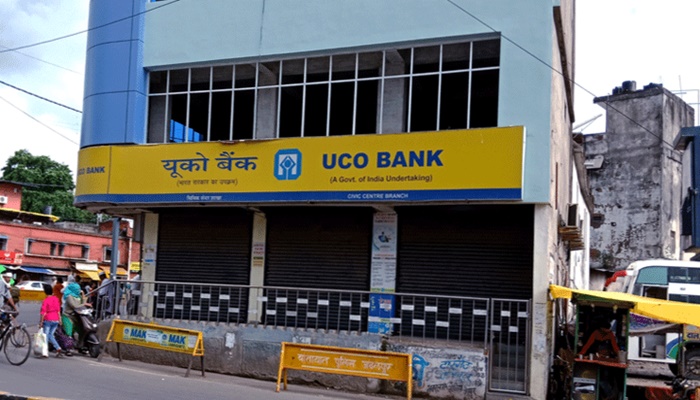“An organisation is as good as its people,” says Raja Radhakrishnan, President and CHRO, Ashok Leyland, in an exclusive interaction with ETHRWorld.
According to Radhakrishnan, Ashok Leyland is known for some of its most benevolent policies and practices.
Elaborating on this, he shares a perspective- “Whether a manager is being inclusive or not can really be understood by the type of recruitment advertisement he puts out.”
“If there are too many specifications and requirements in the JD or job advertisement, it means the organisation is not inclusive,” he adds.
Citing a common example, Radhakrishnan further explains how in many organisations, it is openly put out that the job is not for women candidates.
“A good employer is not about what the policies and values the company has got, but how well the organisation helps make sure that its employees exhibit those values and behaviour at the highest level,” he says.
Attrition
The overall employee attrition at Ashok Leyland is 7.72 percent which is much below the industry average of about 10-12 percent.
Radhakrishnan says that the major chunk of attrition happens in IT and field sales, and some are infant attrition.
This he attributes to the fact that many of the GETs (Graduate Engineer Trainees) who join the company are BTech or BE, and they wish to pursue higher studies, say an MBA, MTech or any Master’s programme.
Diversity and inclusion
Geographical diversity
Geographical diversity is an area Ashok Leyland is emphasizing extensively, according to Radhakrishnan.
Despite being headquartered in Chennai, and in common parlance, considered a South or a Chennai company, Radhakrishnan shares that out of nearly 10 people in the top leadership of the company, different regions of India are all adequately represented– there is a Gujarati, a Punjabi Sardar, a person from Uttar Pradesh, one from Rajasthan and from the southern states as well.
He also reveals, surprisingly, that sitting in Chennai, English and Hindi are the common languages of communication of the top leaders.
Elaborating further on geographical diversity, Radhakrishnan says that with regard to freshers hiring, the target every year is hiring about 70-100 people only, and though Chennai alone has over 100 engineering colleges, Ashok Leyland makes it a point to take fresh talent from the length and breadth of the country; sticking to 2 to 3 candidates from each institution.
He also shares that Ashok Leyland, every year, covers 35 to 40 colleges from underrepresented geographical regions and tier II & III towns across the Indian subcontinent, such as NIT Srinagar (Jammu & Kashmir), NIT Agartala (Tripura) and NIT Silchar (Assam), making sure that talent from every part of the country is given an opportunity.
The gender diversity ratio at Ashok Leyland is 9.55 percent females and 90.45 percent males.
Radhakrishnan says that in 2022, the gender diversity ratio of Ashok Leyland was just 6 percent and in two years, the company is now close to 10 percent, as a result of concerted efforts and programmes, not just through hiring more women but also retaining them.
To achieve this, the company has worked in the following areas:
1. While hiring, the candidate pool is taken care to be diverse with at least one to two women in every role being hired for.
2. Women during different life stages or life events are allowed to take a sabbatical of 1 to 2 years based on need, whereby their job is secure.
3. After maternity break of six months, women employees are allowed to have discussions with their managers and take an additional six months of work-from-home or flexible work-from-office with flexible timings as per their child’s needs.
For instance, someone can choose to come at 9:00 am and leave at 12:00 noon, and work from home for the latter part of the day. Or someone can choose to come at 2:00 pm and logout at 6:00 pm, and work from home in the morning as per requirement.
4. This programme is not just for biological mothers, but is also applicable if someone is adopting a child.
5. Additionally, the company has a programme, called ‘REDREAM’, where women candidates who wish to restart the career after a break are given opportunities.
Radhakrishnan shares that in FY 2022-23, even though the overall attrition of the organisation was close to 8 percent, the attrition of women was over 20 percent.
“As the CHRO, and all the other CXOs at Ashok Leyland, we unanimously set a target, as to how the attrition of women in the company across teams be made equal to or less than the overall attrition of the company of 8 percent,” says Radhakrishnan.
Because of these programmes and the concerted efforts of HR and all CXOs combined, this target has been achieved, and the current attrition of only women at Ashok Leyland is also 8 percent.
The gender ratio in specific roles at the company are:
- For white collar, 7.39 percent;
- For blue collar, 3.20 percent;
- For sales, 5.88 percent.
Gender diversity on the shopfloor
Radhakrishnan says that even on the shopfloor, Ashok Leyland has actively been working to increase the number of women employees.
He says that at three of their plants currently running, women comprise 70 percent of the employees on the shopfloor.
Additionally, there is one engine line facility for light commercial vehicles where the entire line is run by women employees across all roles, starting from managing the core shopfloor to supply chain, quality, and assurance as well.
Radhakrishnan further says that the work culture within the factories and on the shopfloor have also changed as a result of having more women.
The rise in the number of women employees inculcates behavioural changes in men, with more of them exhibiting nice, civil and kinder behaviour and providing a friendly cultural environment, he adds.
Women in leadership
The number of women in leadership positions (senior manager and above roles) at the organisation is 66, which is 3.33 percent.
“This is one area where we are still working on and trying to improve the numbers over time,” says Radhakrishnan.
Employee demographics
The overall staff strength of Ashok Leyland is 35,000 employees.
The total number of employees working in the sales functions is 2,436.
The company’s white-collar workforce comprises 5,244 employees and that of blue-collar workforce comprises 4,457 employees.
The total number of trainees is 540.
Hiring strategy and numbers
For freshers’ hiring, Ashok Leyland sources talent from NITs, and various Tier-I and Tier-II institutes and NIRF (National Institutional Ranking Framework) accredited campuses across India.
Speaking of the leadership and the CXO level hiring, Radhakrishnan says 60 percent of the top leadership is internally grown, and the remaining are laterally hired. This includes positions of CXOs and CXO minus-1 levels.
For battery, embedded systems and some other niche technologies, the company is more open to hiring from outside.
In FY 2023-24, a total of 141 GETs (graduate engineering trainees), 79 DETs (diploma engineering trainees), 7 MTs (management trainees) and 10 PGETs (post graduate engineering trainees) were hired.
In the same financial year, 524 people were hired laterally. Six people were hired for leadership roles.
Transparent IJP policy to promote internal churn
Ashok Leyland has facilitated a fair IJP (Internal Job Posting) policy, such that before putting out any vacant role or opening for external hiring, it is rolled out as an IJP for two weeks within the company first.
To promote this more actively and reduce risks or internal issues, any employee who wishes to apply for an IJP does not have to inform his manager, and only when he is finally selected the manager would come to know about the development.
The manager has only a maximum of three months to find a replacement and release the employee who cleared the IJP requirement.
The company takes care that the rating and promotion of the employee does not get impacted as a result of switching roles via an IJP in the middle of the year.
Under this policy, the rating of an employee who has switched through an IJP, cannot be less than the average of his rating of the last three years.
Radhakrishnan says, “In promoting internal talent, today a lot of managers actually complain to me that many of my guys have left the team due to IJP and I have not got my replacement. I am actually happy to have this kind of complaint, rather than employees complaining that we are very scared to apply for an IJP role due to the manager or cultural dynamics.”
All employees with a minimum of two years continuous service in their current role are applicable for internal job transfers through internal job postings.
Employees belonging to the same grade or up to two grades below the advertised position can apply and higher-grade employees can also apply based on their career path aspirations.
Employees who have resigned and are serving their notice period can also apply for IJPs provided they withdraw their resignation to enable processing of the job application.
As a result of these initiatives, Ashok Leyland closed 22 percent of the open positions through IJPs in FY 2024-25, as compared to 3 percent in the previous financial year.
Referral policy
Radhakrishnan says that as a corollary to this IJP policy, the company has a robust referral policy that contributes over 50 percent closure of all positions in sales functions.
Radhakrishnan explains that referrals are more successful as compared to applications coming from their third party, as the CVs are more relevant, and chances of them getting selected are much higher, as the one who refers is aware exactly of the position’s requirements.
This is also because the person referring is working with the company and his reputation is at stake.
Plus, the referred person who joins the company already has a friend here so, he has a smooth and seamless onboarding and induction and there is more motivation.
All open vacancies up to the level of middle management are open for getting filled by employee referrals.
Learning and succession planning
Radhakrishnan says that people development is a long-term game as per Ashok Leyland’s strategy.
“If you want to develop someone for a responsibility or a leadership position, you should start working at least 3 to 5 years before,” he says.
“Today, if you want a successor, you cannot prepare a person in the next 3 to 6 months as people development is a long-term game,” he explains.
He emphasizes on how managing people well, automatically leads to the business being taken care of.
“This is a proven fact with real time stats and numbers – if we take revenue, profitability and cash flow, and compare it against numbers of attrition, diversity ratios, adhering to the Bell Curve, and total number of extraordinary performers, promotions and company being able to reduce regrettable attrition,” explains Radhakrishnan.




















